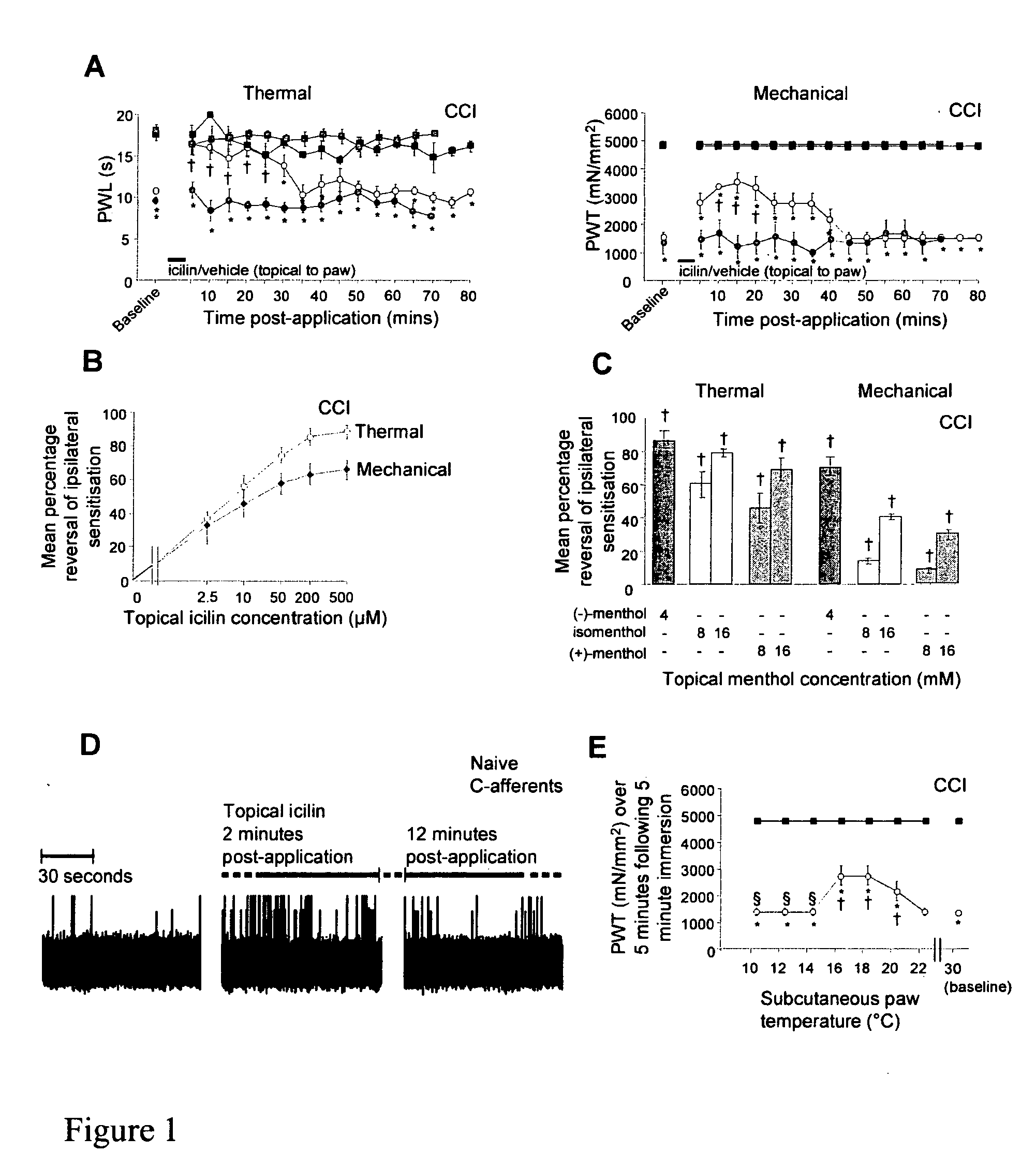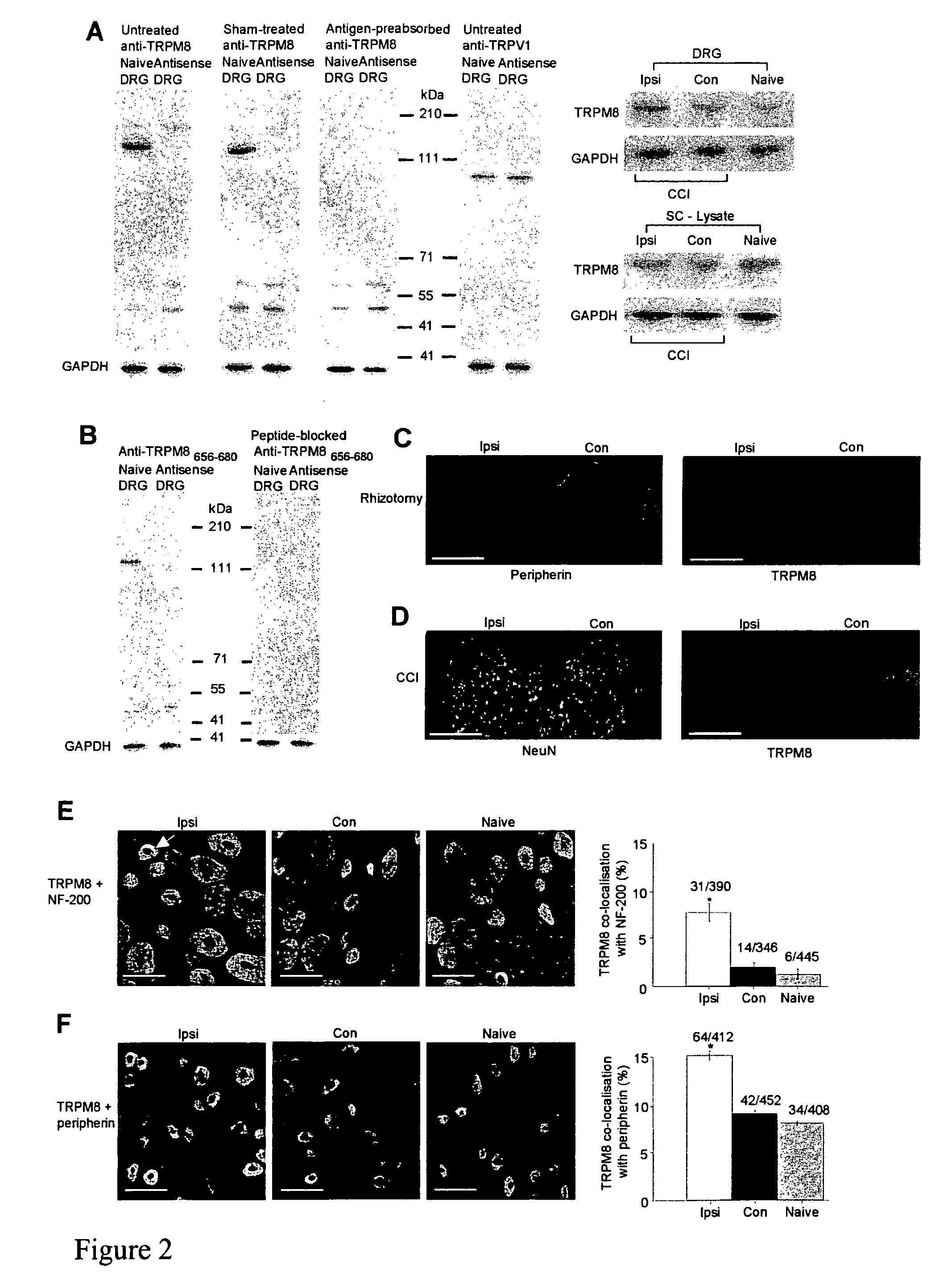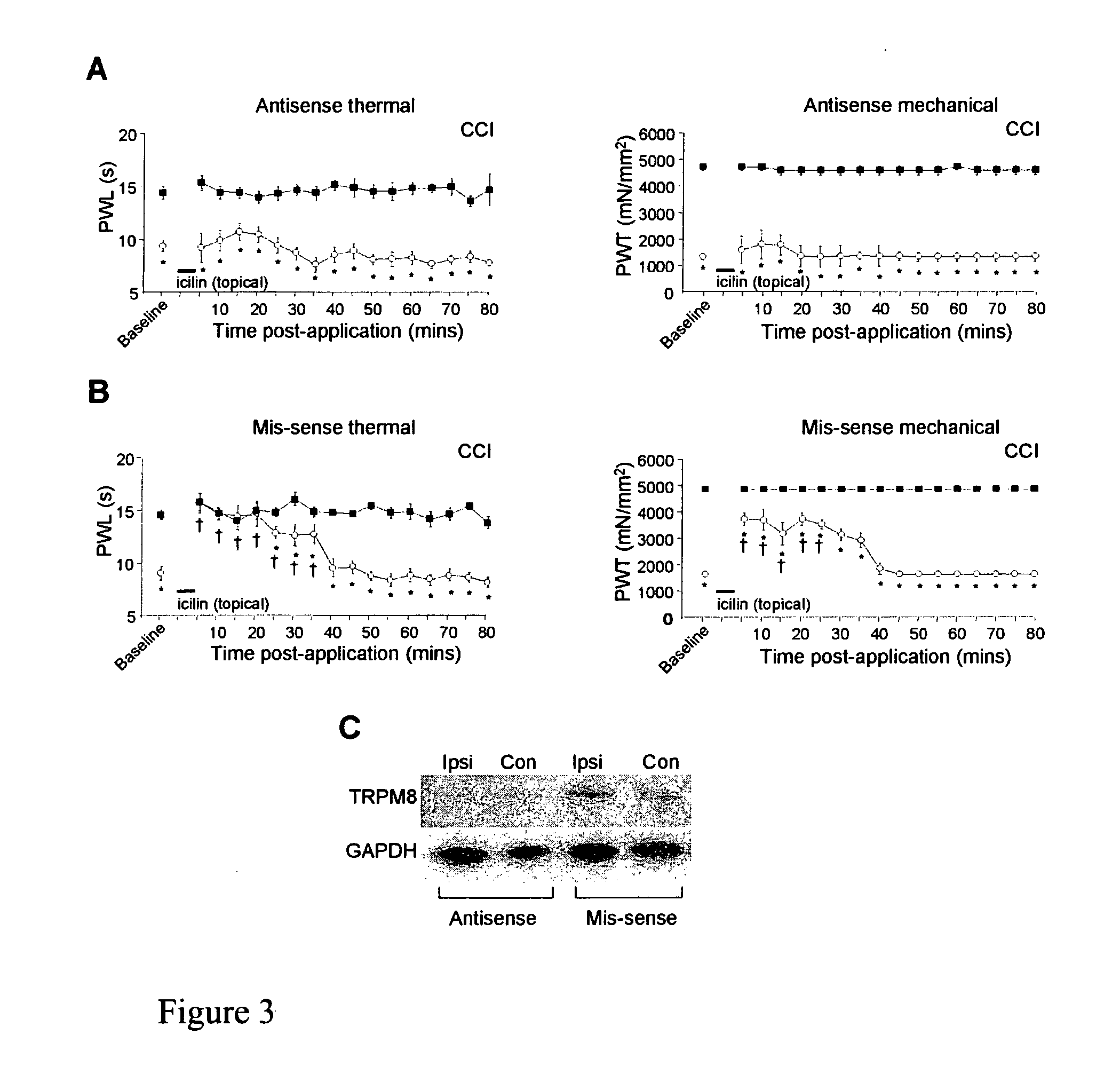Induction of analgesia in neuropathic pain
a neuropathic pain and analgesia technology, applied in the field of agents, can solve the problems of peripheral nerve damage-related chronic neuropathic pain, and achieve the effect of reducing the amount of chronic neuropathic pain
- Summary
- Abstract
- Description
- Claims
- Application Information
AI Technical Summary
Benefits of technology
Problems solved by technology
Method used
Image
Examples
Embodiment Construction
[0066]The present invention will now be described by way of example and with reference to the figures which show:
[0067]FIG. 1 Peripheral TRPM8 activation and moderate cooling are analgesic following CCI.
[0068]A,B,C,E) Behavioural data from CCI animals, shown as mean±SEM, each graph represents n of 6 animals. A) Paw withdrawal latency (PWL; s) to noxious heat and paw withdrawal threshold (PWT; mN / mm2) to mechanical stimuli before and following 5 min paw immersion in a shallow 30° C. water bath containing 80 □M icilin or vehicle; ◯: ipsilateral paw plus icilin, : ipsilateral+vehicle; ▪: contralateral plus icilin, ▪: contralateral plus vehicle, * indicates significant ipsilateral-contralateral differences, † indicates significant difference from pre-drug baseline (p<0.05). B) Concentration-response curve for mean±SEM percentage reversal of ipsilateral sensitisation for thermal (◯) or mechanical (♦) tests calculated over 10-15 min following paw immersion in 2.5-500 μM icilin. C) Revers...
PUM
| Property | Measurement | Unit |
|---|---|---|
| temperatures | aaaaa | aaaaa |
| temperatures | aaaaa | aaaaa |
| temperature | aaaaa | aaaaa |
Abstract
Description
Claims
Application Information
 Login to View More
Login to View More - R&D
- Intellectual Property
- Life Sciences
- Materials
- Tech Scout
- Unparalleled Data Quality
- Higher Quality Content
- 60% Fewer Hallucinations
Browse by: Latest US Patents, China's latest patents, Technical Efficacy Thesaurus, Application Domain, Technology Topic, Popular Technical Reports.
© 2025 PatSnap. All rights reserved.Legal|Privacy policy|Modern Slavery Act Transparency Statement|Sitemap|About US| Contact US: help@patsnap.com



